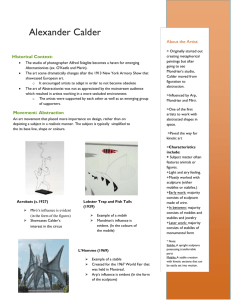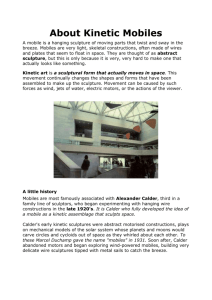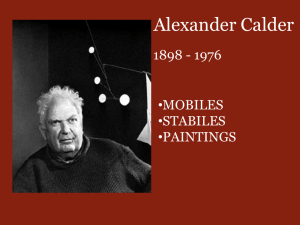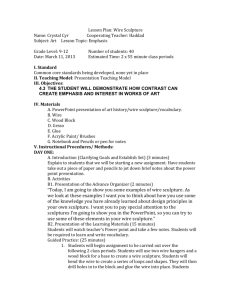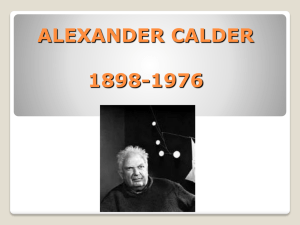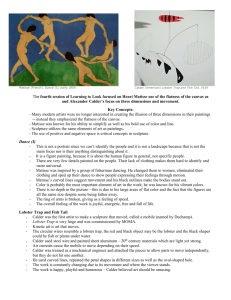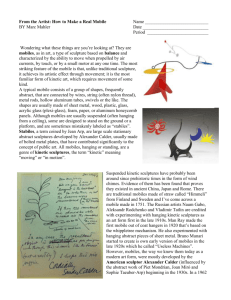Gestural Wire Sculpture - Waterford Public Schools
advertisement
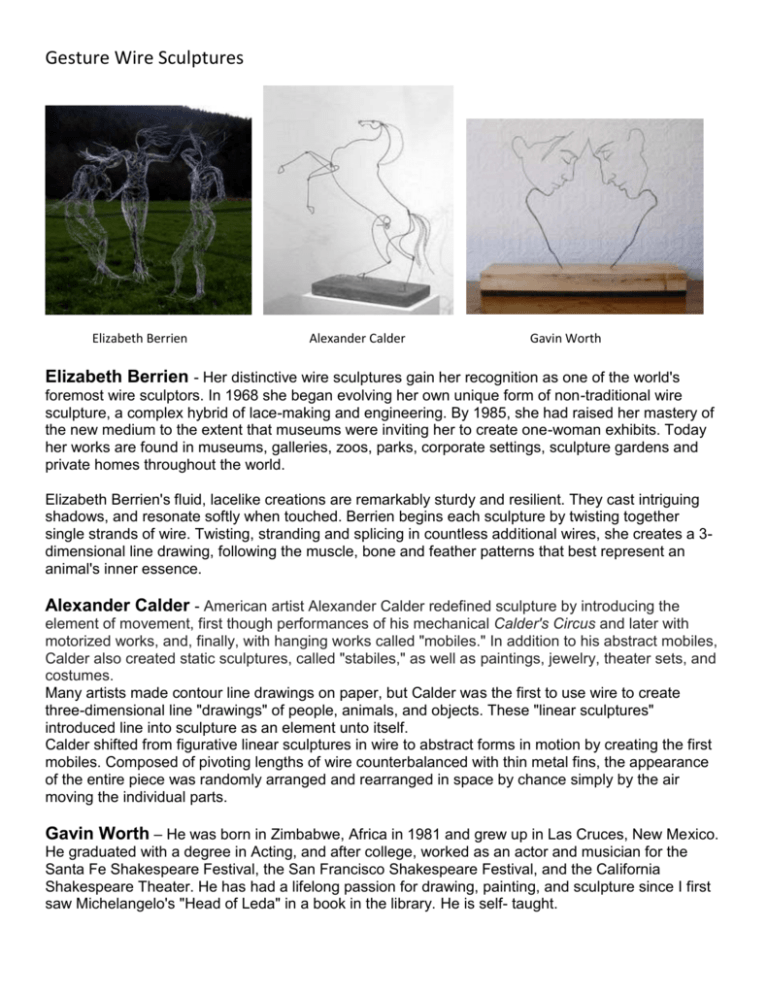
Gesture Wire Sculptures Elizabeth Berrien Alexander Calder Gavin Worth Elizabeth Berrien - Her distinctive wire sculptures gain her recognition as one of the world's foremost wire sculptors. In 1968 she began evolving her own unique form of non-traditional wire sculpture, a complex hybrid of lace-making and engineering. By 1985, she had raised her mastery of the new medium to the extent that museums were inviting her to create one-woman exhibits. Today her works are found in museums, galleries, zoos, parks, corporate settings, sculpture gardens and private homes throughout the world. Elizabeth Berrien's fluid, lacelike creations are remarkably sturdy and resilient. They cast intriguing shadows, and resonate softly when touched. Berrien begins each sculpture by twisting together single strands of wire. Twisting, stranding and splicing in countless additional wires, she creates a 3dimensional line drawing, following the muscle, bone and feather patterns that best represent an animal's inner essence. Alexander Calder - American artist Alexander Calder redefined sculpture by introducing the element of movement, first though performances of his mechanical Calder's Circus and later with motorized works, and, finally, with hanging works called "mobiles." In addition to his abstract mobiles, Calder also created static sculptures, called "stabiles," as well as paintings, jewelry, theater sets, and costumes. Many artists made contour line drawings on paper, but Calder was the first to use wire to create three-dimensional line "drawings" of people, animals, and objects. These "linear sculptures" introduced line into sculpture as an element unto itself. Calder shifted from figurative linear sculptures in wire to abstract forms in motion by creating the first mobiles. Composed of pivoting lengths of wire counterbalanced with thin metal fins, the appearance of the entire piece was randomly arranged and rearranged in space by chance simply by the air moving the individual parts. Gavin Worth – He was born in Zimbabwe, Africa in 1981 and grew up in Las Cruces, New Mexico. He graduated with a degree in Acting, and after college, worked as an actor and musician for the Santa Fe Shakespeare Festival, the San Francisco Shakespeare Festival, and the California Shakespeare Theater. He has had a lifelong passion for drawing, painting, and sculpture since I first saw Michelangelo's "Head of Leda" in a book in the library. He is self- taught.


